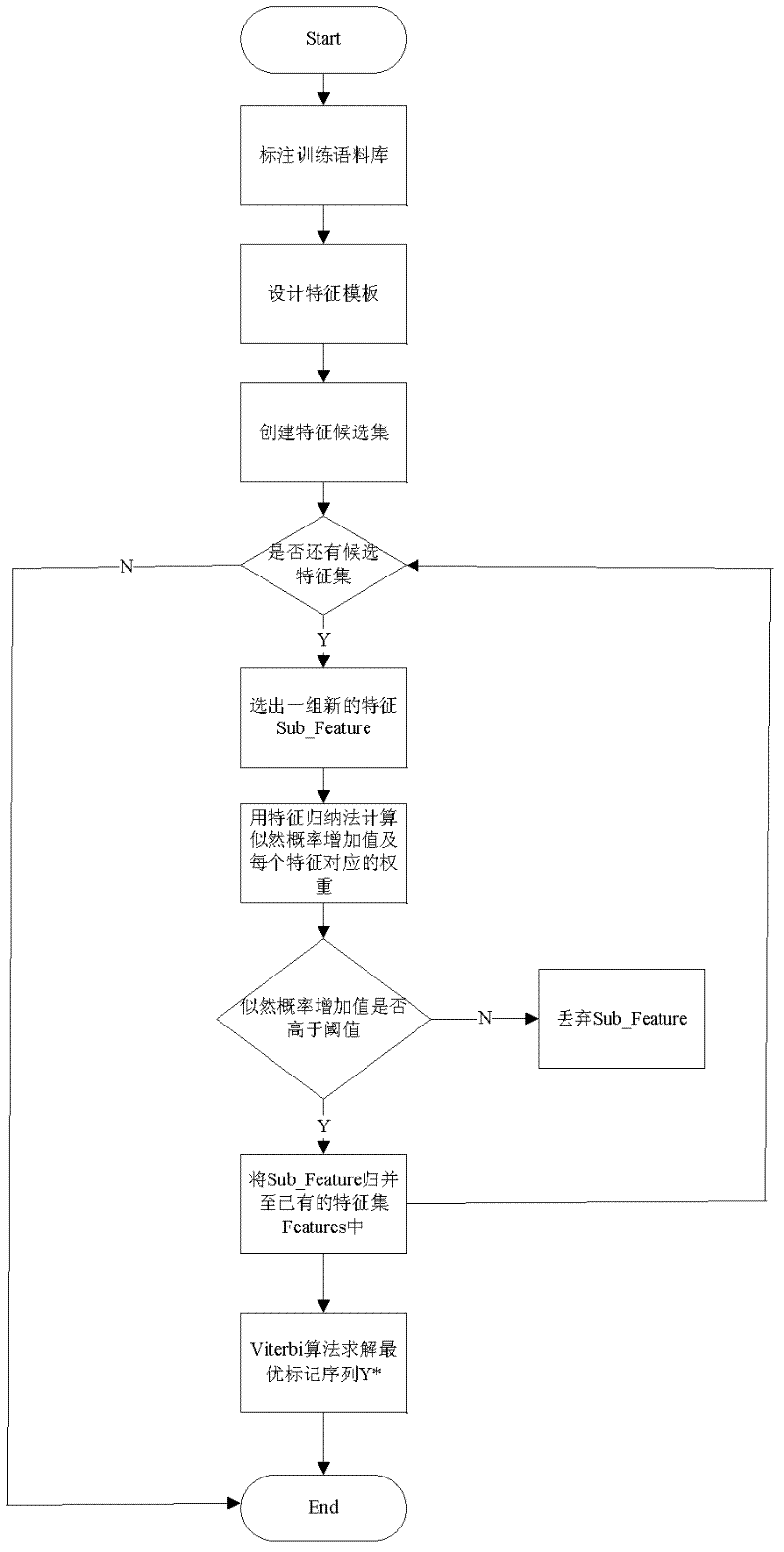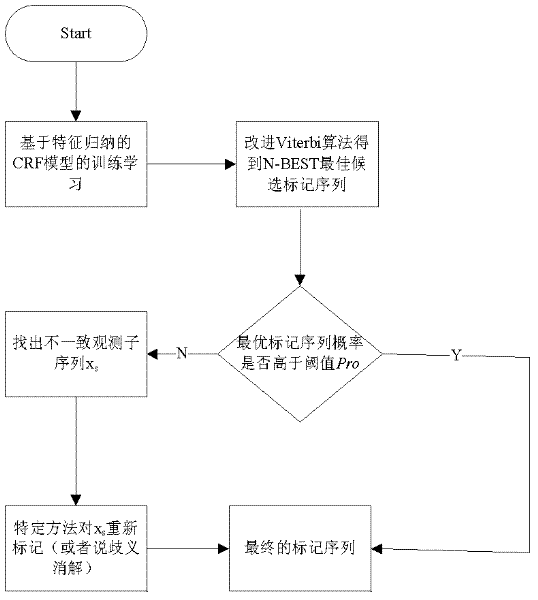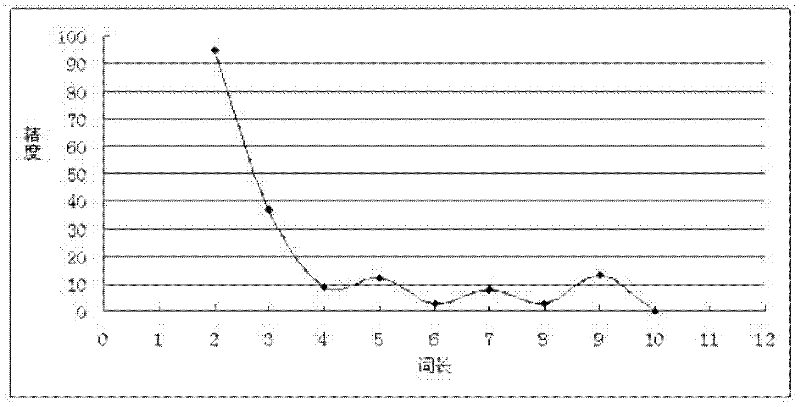Recognition ambiguity resolution method of Chinese named entity
A named entity recognition and ambiguity resolution technology, which is applied in the field of named entity extraction, can solve problems such as costing a lot of time and storage space, and being difficult to transplant
- Summary
- Abstract
- Description
- Claims
- Application Information
AI Technical Summary
Problems solved by technology
Method used
Image
Examples
Embodiment Construction
[0038]In one embodiment of the present invention, the training corpus used comes from MSRA Bakeoff 2003, and five feature templates are designed. During the experiment, not only the position information of multiple words in the context, but also the type information of the context words are used to enrich the feature templates the information contained. The training corpus has a total of 46364 sentences, of which the total number of named entities is 75059, which means that each sentence has an average of 1.6 named entities. The test corpus has a total of 4365 sentences, of which the total number of named entities is 6190, with an average of 1.4 named entities per sentence. The corpus is stored as an XML document. During the experiment, the CPU of the computer is Core 2 Duo, the main frequency is 2.4GHZ, the memory is 1G, the operating system is RedHat 9.0Linux, and the CRF model training tool used is CRF++-0.54.
[0039] The feature templates used during training are shown ...
PUM
 Login to View More
Login to View More Abstract
Description
Claims
Application Information
 Login to View More
Login to View More - R&D
- Intellectual Property
- Life Sciences
- Materials
- Tech Scout
- Unparalleled Data Quality
- Higher Quality Content
- 60% Fewer Hallucinations
Browse by: Latest US Patents, China's latest patents, Technical Efficacy Thesaurus, Application Domain, Technology Topic, Popular Technical Reports.
© 2025 PatSnap. All rights reserved.Legal|Privacy policy|Modern Slavery Act Transparency Statement|Sitemap|About US| Contact US: help@patsnap.com



